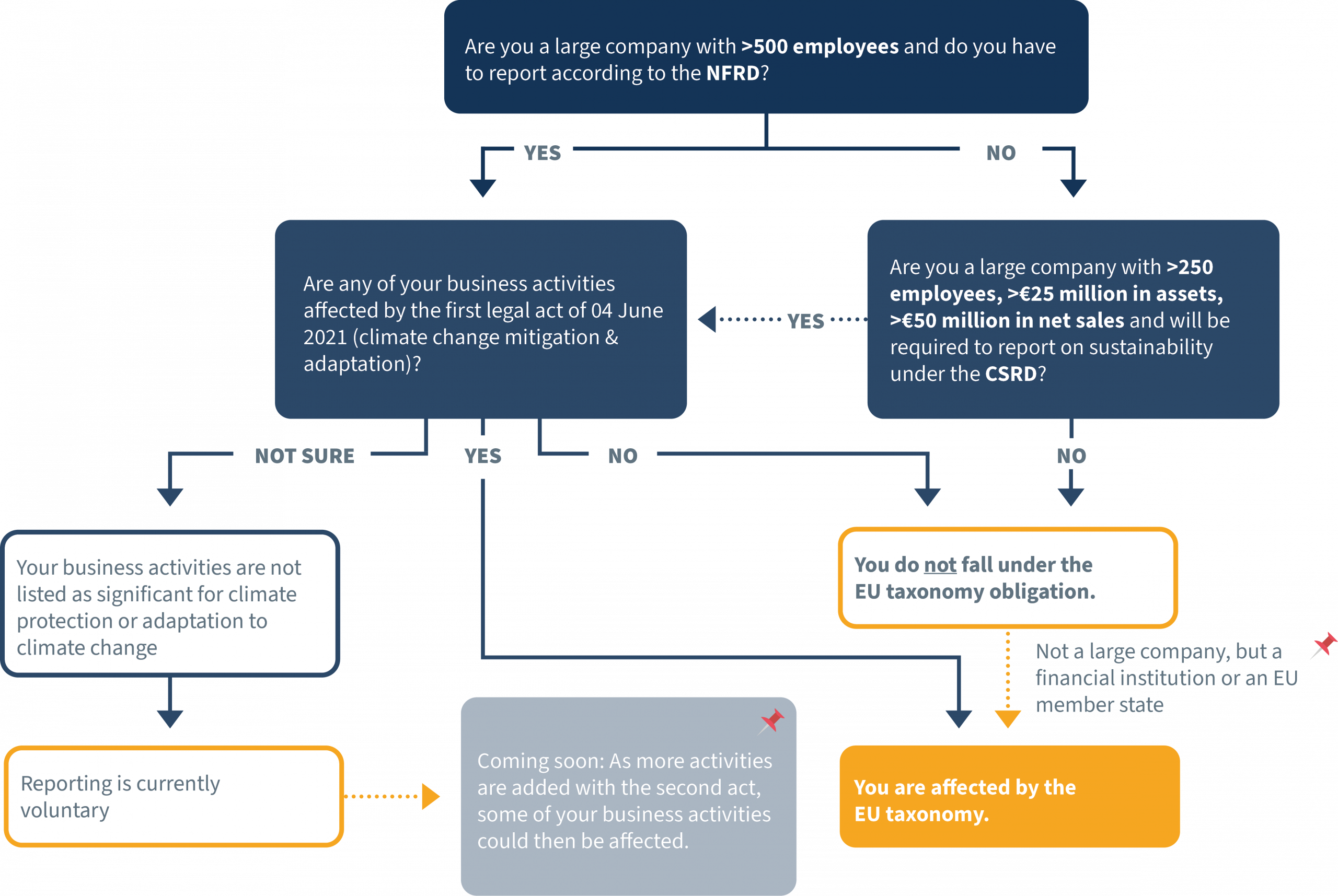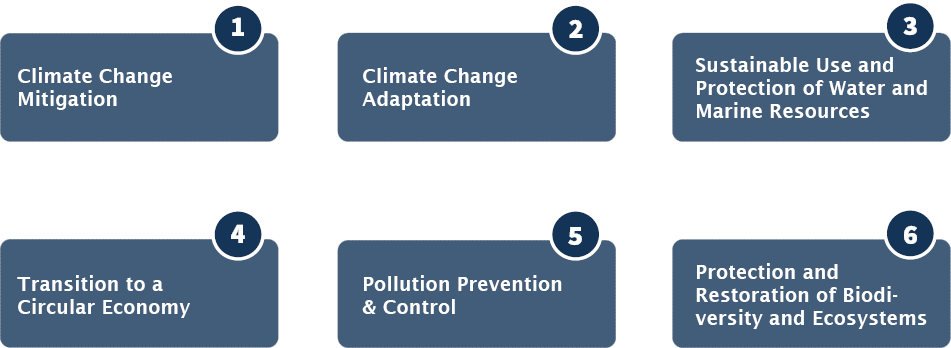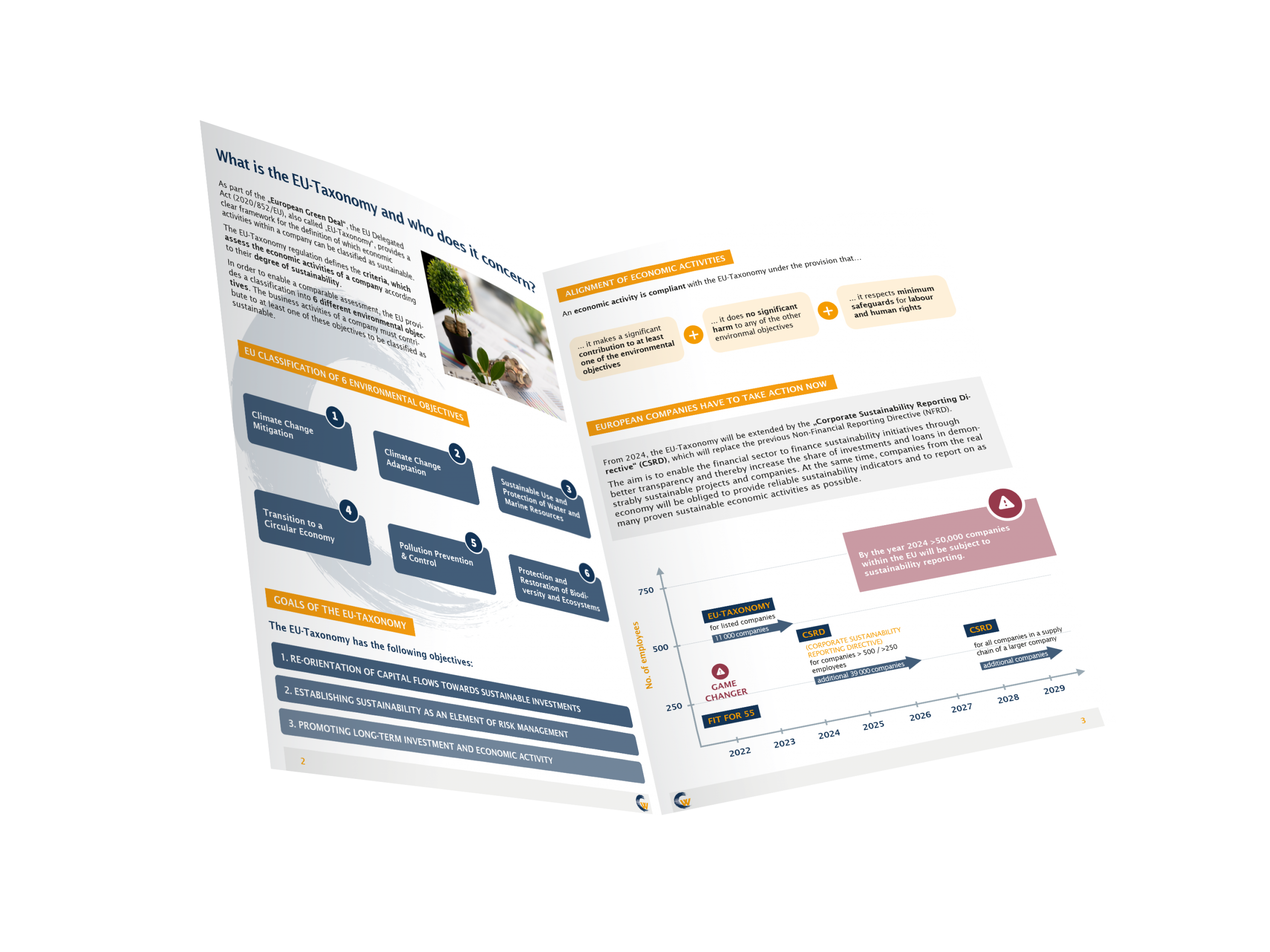WITH THE INTRODUCTION OF THE EU-TAXONOMY, SUSTAINABILITY IN THE COMPANY turns from NICE- TO-HAVE TO mandatory
Since 01.01.2022, the EU Delegated Act (EU) 2020/852, also known as the “EU-Taxonomy”, has been in force. As a complex element of the EU Action Plan for Sustainable Finance, it serves as a classification system that evaluates economic activities of companies from a wide range of sectors based on the proportion of their sustainability.
This is intended to give the public and investors more confidence in a company’s published sustainability figures. The assessment criteria provide information according to which economic activities can be described as sustainable and which conditions must be met to achieve this classification. The regulation is intended to make a significant contribution to achieving the EU climate targets set by the European Green Deal, promoting sectors with a low CO₂ impact and avoiding greenwashing in the future.
Who is affected by the EU-Taxonomy Regulation?
- Industrial- and service companies with more than 500 employees that are required to report the percentage of sustainability in their economic activities
- Companies that are required to submit non-financial reports (NFRD)
- Financial market participants who want to market a financial product as sustainable
FIND OUT IF YOUR COMPANY HAS TO COMPLY WITH THE EU-TAXONOMY REGULATION

DISCOVER TAXONOFY
With TAXONOFY from WAVES, companies can assess the degree of sustainability in their economic activities according to turnover, capital- and operating expenses and in compliance with the EU-Taxonomy guidelines. The results can be used as a starting point to continuously improve a company’s taxonomy rating, to measure its sustainability contribution at the push of a button and to always be on the safe side in terms of compliance.
An interface to other WAVES products on the Sustainability Management Platform offers additional possibilities for the holistic calculation and presentation of environmental, social and governance KPI’s for an active steering of a company in the direction of sustainability.

EU-TAXONOMY SIMPLY EXPLAINED


GOALS OF THE EU-TAXONOMY
The EU-Taxonomy attempts to define the assessment criteria and associated technical standards for 6 different environmental objectives. As of September 2022, the first two targets “climate change mitigation” and “climate change adaptation” have been defined. Others will follow by the end of 2022.

In the future, sustainability will no longer be a “nice to have”, but reporting on sustainability will become a duty! We enable companies to carry out the information on the taxonomy independently and thus become more independent of external partners. In the future, the information on the taxonomy must be submitted at least once a year or at the latest when there is a change in the economic activity.
How do sustainable economic activities define themselves?
The Taxonomy Ordinance defines economic activities as sustainable based on 3 criteria:
WHITE PAPER
Learn what EU-Taxonomy is, who it affects, and how to successfully navigate the requirements of current regulations and standards.

DO YOU WISH ADVICE ON EU-TAXONOMY?
Would you like to receive individual advice from our experts on EU-Taxonomy? Take a look at our various consulting services.
DO YOU WISH ADVICE ON EU-TAXONOMY?
Would you like to receive individual advice from our experts on EU-Taxonomy? Take a look at our various consulting services.

